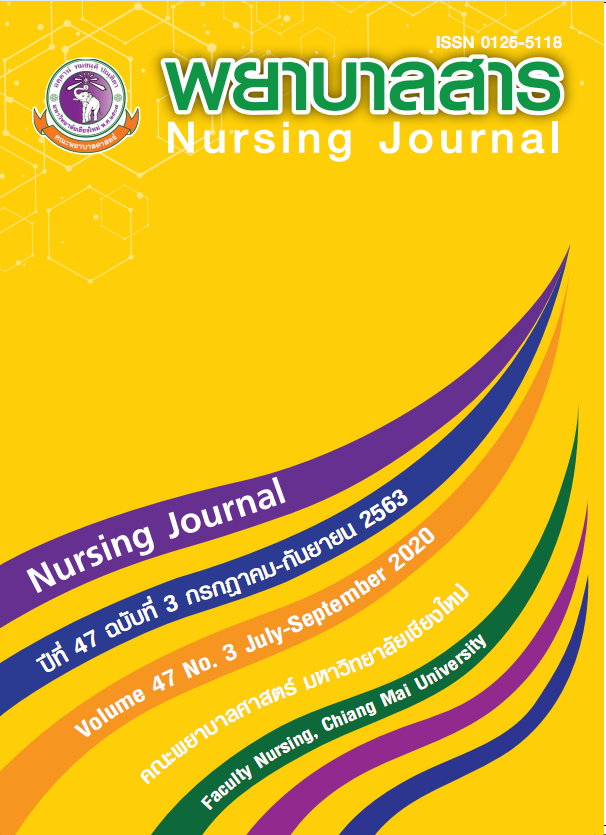Development of a Registered Nurse Competency Framework, Cardiothoracic Intensive Care Unit, Buddhachinaraj Phitsanulok Hospital
Keywords:
Competency Framework, Registered Nurses, Cardiothoracic Intensive Care UnitAbstract
Nurse competency plays a critical role in determining the quality of nursing service, client safety and service development in health organizations. The purpose of this developmental study was to develop a competency framework for registered nurses in the Cardiothoracic Intensive Care Unit at Buddhachinaraj Phitsanulok Hospital by applying the strategies for developing competency frameworks of Marrelli, Tondora, & Hoge (2005).The instruments used for this study was 1) a competency list record form, 2) interview guidelines, and 3) a competency framework evaluation form. The samples consisted of six nurse specialists and five experts by using purposive sampling methods. The data collection process included reviewing relevant literature and interviewing the nurse specialists. The data analysis consisted of content analysis and calculation of content validity index.
The results of the study revealed that the competency framework for registered nurses in the Cardiothoracic Intensive Care Unit at Buddhachinaraj Phitsanulok Hospital included six themes and 24 behavioral indicators which can be classified as: 1) knowledge of cardiac and thoracic surgery (6 indicators), 2) evaluation of cardiac and thoracic surgery clients (4 indicators), 3) nursing services for cardiac and thoracic surgery clients (2 indicators),4) medical administration with cardiac and thoracic surgery clients (3 indicators), 5) cardiopulmonary resuscitation with cardiac and thoracic surgery clients (5 indicators) and 6) assistant procedure medical nursing and maintenance for special equipment in cardiac and thoracic clients (4 indicators)
Counsel for nurse administrators can apply this competency framework to develop a competency assessment form for measuring the competency of professional nurses in the Cardiothoracic Intensive Care Unit at Buddhachinaraj Phitsanulok Hospital. Professional nurses in turn can use this competency framework as a guideline for self-development.
References
Buddhachinaraj Hospital. (2015). Drug administration. Phitsanulok: Buddhachinaraj Hospital.
Buddhachinaraj Phitsanulok Hospital. (2016). Department level report for Intensive Care Unit in Cardiac and Thoracic Surgery. Buddhachinaraj Hospital Phitsanulok: Buddhachinaraj Hospi-tal, Phitsanulok.
Central Chest Institute Of Thailand. (2012). Standard of nursing for cardiothoracic and chest Central Chest Institute Of Thailand. Retrieved April 15, 2017, from www.ccit.go.th/document_up-load/ km/55-1.pdf
Duangnakhon, M. (2015). Development of Competency Framework for Registered Nurses, Surgical Intensive Care Unit, Chang Rai Prachanukroh Hospital. (Master of Nursing Independent Study in Nursing Administration) Graduate School, Chiang Mai Un iversity.
Fey, M. K., & Miltner, R. S. (2000). A competency-based orientation program for new graduate nurses. Journal of Nursing Administration, 30(3), 126-132. doi:10.1097/00005110-200003000-00004
Kusoom, W., & Krethong, P. (Ed.). (2008). Critical care nursing: A holistic approach (pp. 189-238). Bangkok: Saha-pracha-panich.
Leewattana, T. (2004). Basic conditioning factors, self-care agency, and quality of life of patients following open heart surgery (Master Thesis, Prince of Songkla University).
Marrelli, A. F., Tondora, J., & Hoge, M. A. (2005). Strategies for developing competency models.Administration and Policy in Mental Health and Mental Health Services Research, 32 (5-6), 533-561.
Medical Engineering Division Department of Health Service Suppo rt. (2014). Integrated medical device management in hospitals. Nakhon Ratchasima: Medical Engineering Center 4.
Nursing Division Ministry of Pubic Health. (2005). Guidelines for use of professional nursing competency assessment. Nonthaburi: Nursing Institute Department of Medicine Ministry of Public Health.
Permpech, R. (2016). The role of perioperative nurse: Health ed ucation for pre and postoperative visiting. Ramathibodi Nursing Journal, 22 (1), 9-19.
Polit, D. F., & Beck, C. T. (2006). The content validity index: Are you sure you know what’s being reported? Critique and recommendations. Research in Nursing & Health, 29, 489-497.
Sanprasarn, P. (2009). Concepts and principles of competency ut ilization of nurses. In Penchun
Sanprasarn, Duangkamol Wattradul, Bubpawan Srilum (Eds.), Nursing for safety: Competency CVT nurse (3 rd ed., pp. 87-108). Bangkok: Sukhumvit Printing.
Sonpilom, S. (2016). Nursing care for critically ill patients after cardiovascular surgery. 32 th Annual Conference 2016.
Society of Thoracic Surgeons of Thailand. (2015). Statistic Heart Surgery of Thailand. Retrieved April 15, 2017, from. http://thaists.org/news_detail.php?news_id=212.
Srikaew, U. (2000). Cardiovascular nursing: Continuous caring. Songkhla: Lim-brothers printing.
Srisathitnarakun, B. (2007). Leadership and management strategies for nursing organizations in the 21st century.Bangkok: Chulalongkorn University.
Thipprecha, D. (2005). Potential for human resources management in nursing. Bangkok: P.A. Living.
Thongcharoen, P. (2016). Guideline of resuscitation in postoperative cardiac surgery. Retrieved June 17, 2017, from http://thaists.org/pdf/Heart_surgery%20_2016.p df
Trirattanathumrong, J. (2009). Development of competency framework of professional nurses inthe sub coronary care unit, Maharaj Nakorn Chiang Mai hospital (Master of Nursing Independent Study in Nursing Administration) Graduate School, C hiang Mai University.
World Health Organization. (2017). Non communicable diseases. Retrieved May 23, 2018, from http://www.who.int/en/news-room/fact-sheets/detail/noncommunicable-diseases
Downloads
Published
How to Cite
Issue
Section
License
บทความที่ได้รับการตีพิมพ์เป็นลิขสิทธิ์ของวารสารพยาบาลสาร
ข้อความที่ปรากฏในบทความแต่ละเรื่องในวารสารวิชาการเล่มนี้เป็นความคิดเห็นส่วนตัวของผู้เขียนแต่ละท่านไม่เกี่ยวข้องกับมหาวิทยาลัยเชียงใหม่ และคณาจารย์ท่านอื่นๆในมหาวิทยาลัยฯ แต่อย่างใด ความรับผิดชอบองค์ประกอบทั้งหมดของบทความแต่ละเรื่องเป็นของผู้เขียนแต่ละท่าน หากมีความผิดพลาดใด ๆ ผู้เขียนแต่ละท่านจะรับผิดชอบบทความของตนเองแต่ผู้เดียว






